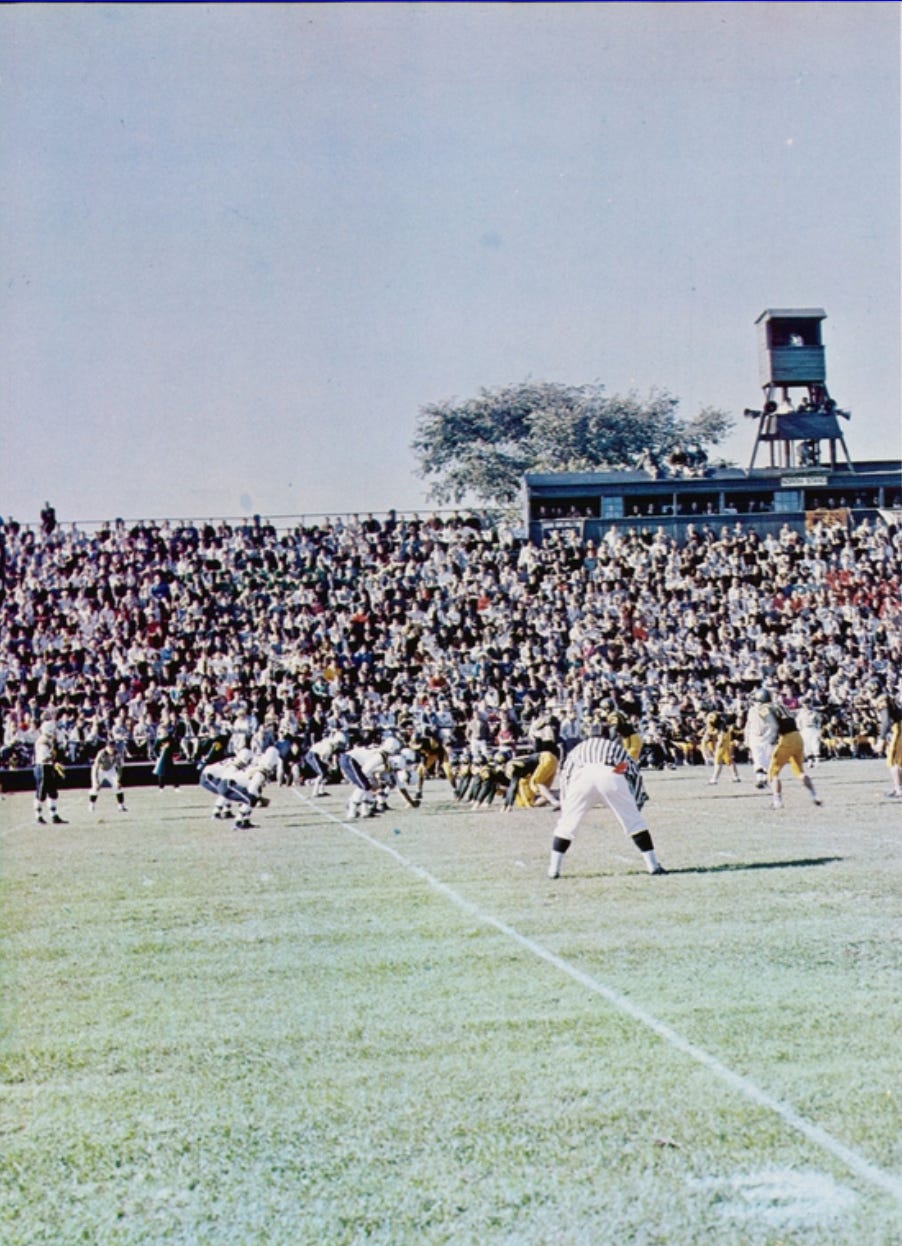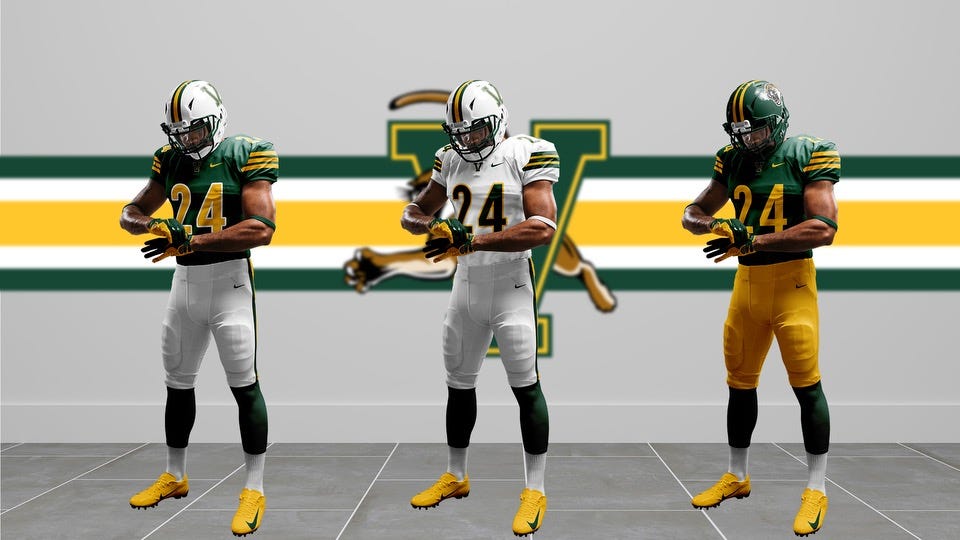Stadium Size, Football Droppers, and Deemphasizers: Vermont
There are 134 FBS football teams spread across 41 states. Of the nine states without an FBS team, 7 have one or more FCS teams. The exceptions are Alaska and Vermont. Alaska had the University of Alaska Polar Bears in the mid-1950s, so they qualified as one of a handful of states with college football before statehood.
Vermont, on the other hand, has college football teams competing at lower levels today. Also, the University of Vermont had a football team from 1886 to 1974, when it ended its program as a member of the Yankee Conference, playing the equivalent of today's FCS. That makes UVM the only state flagship school to play and drop football.
The program did not start well, losing its first game, 99-0, to Dartmouth. Most years, its schedule was dotted with regional state schools and small colleges, and it did not fare particularly well regardless of its foe.
The desire for an athletic complex the state could be proud of led to the multi-purpose Centennial Field, which sat 10,000 when bleachers lined both sidelines. It remains Vermont's baseball and soccer stadium today, though its capacity has dropped to 4,415.
As with most programs, they had some fine moments, but the overall state of the program is shown by the 1951 yearbook touting the 1950 team's 6-2 record as the school's finest since 1923.
UVM enjoyed winning records in the mid-1960s when Little All-American Bobby Mitchell ran roughshod over their New England competition, but budget challenges ultimately took their toll.
The university dropped baseball in 1971, though they eventually brought it back before dropping it a second time. But the significant expenses came with football. Needing to cut $1.2 million in costs in 1974, the school dropped football, saving $250,000, less the scholarships for athletes who chose to remain at the school. Despite a big win over UMass that season, the program went away with little apparent thought of bringing it back.
Next up: Sewanee (University of the South)
2024 Concept Uniform
My brother, Steve, dabbles in sports team logos and uniforms. Here are his concept uniforms for Vermont’s imaginary 2024 team.
Ranking by Stadium Size
Below are the schools reviewed to date, ranked by stadium size. The stadiums’ opening and demolition years (if applicable) are also noted.
Catholic (Brookland Stadium): 30,000 | 1924 - 1985
Denver (DU/Hilltop Stadium): 30,000 | 1925 - 1971
Marquette (Marquette Stadium): 24,000 | 1924 - 1977
Xavier (Corcoran Stadium): 15,000 | 1929 - 1988
Gonzaga (Gonzaga Stadium): 12,000 | 1922 - 1949
California State University, Fullerton (Titan Stadium): 10,000 | 1992 - TBD
Boston University (Nickerson Field): 10,000 | 1915 - TBD
Vermont (Centennial Field): 10,000 | 1923 - TBD
NYU (Ohio Field): 5,000 (est.) | 1897 - 1947
San Francisco (St. Ignatius Stadium): <5,000 (est.) | c. 1909 - c. 1930
Carnegie-Mellon (Skibo Bowl): 4,500 | 1960 - 1987 | Gesling Stadium: 3,900 | 1990 - TBD
Sewanee (McGee Field): 3,000 | 1891 - TBD
Schools to Review
California State University, Long Beach | University of California, Santa Barbara | Case Western | Chicago | CCNY | Creighton | DePaul | Detroit | Drake | Loyola (Chicago) | Nebraska-Omaha | Pacific | St. Louis | Santa Clara | Tampa | Washington University in St. Louis | Wichita State
Football Archaeology is a reader-supported site. Click here for options on how to support this site beyond a free subscription.








